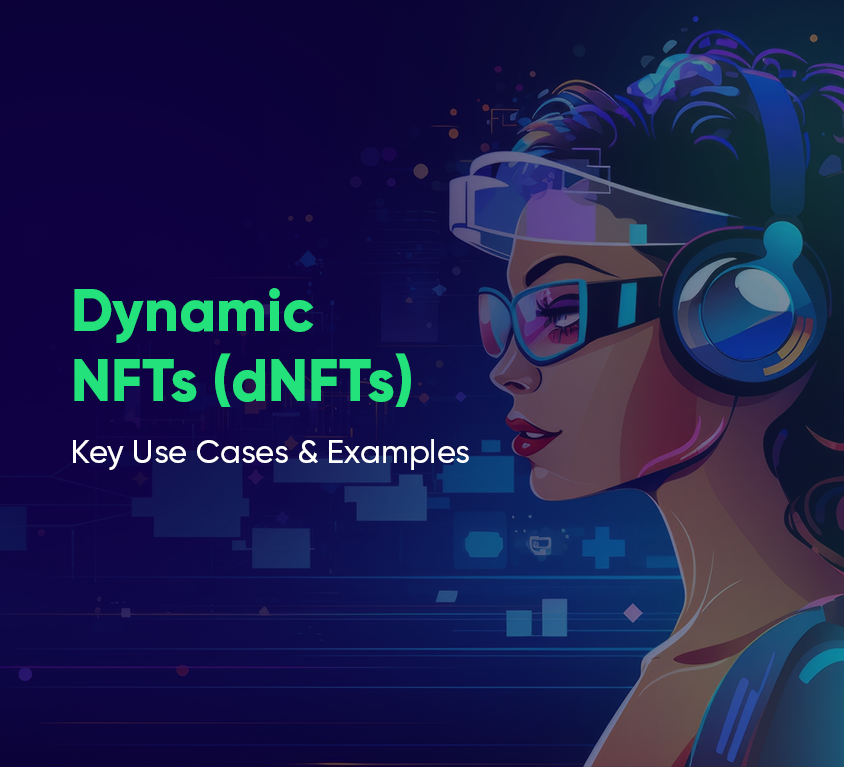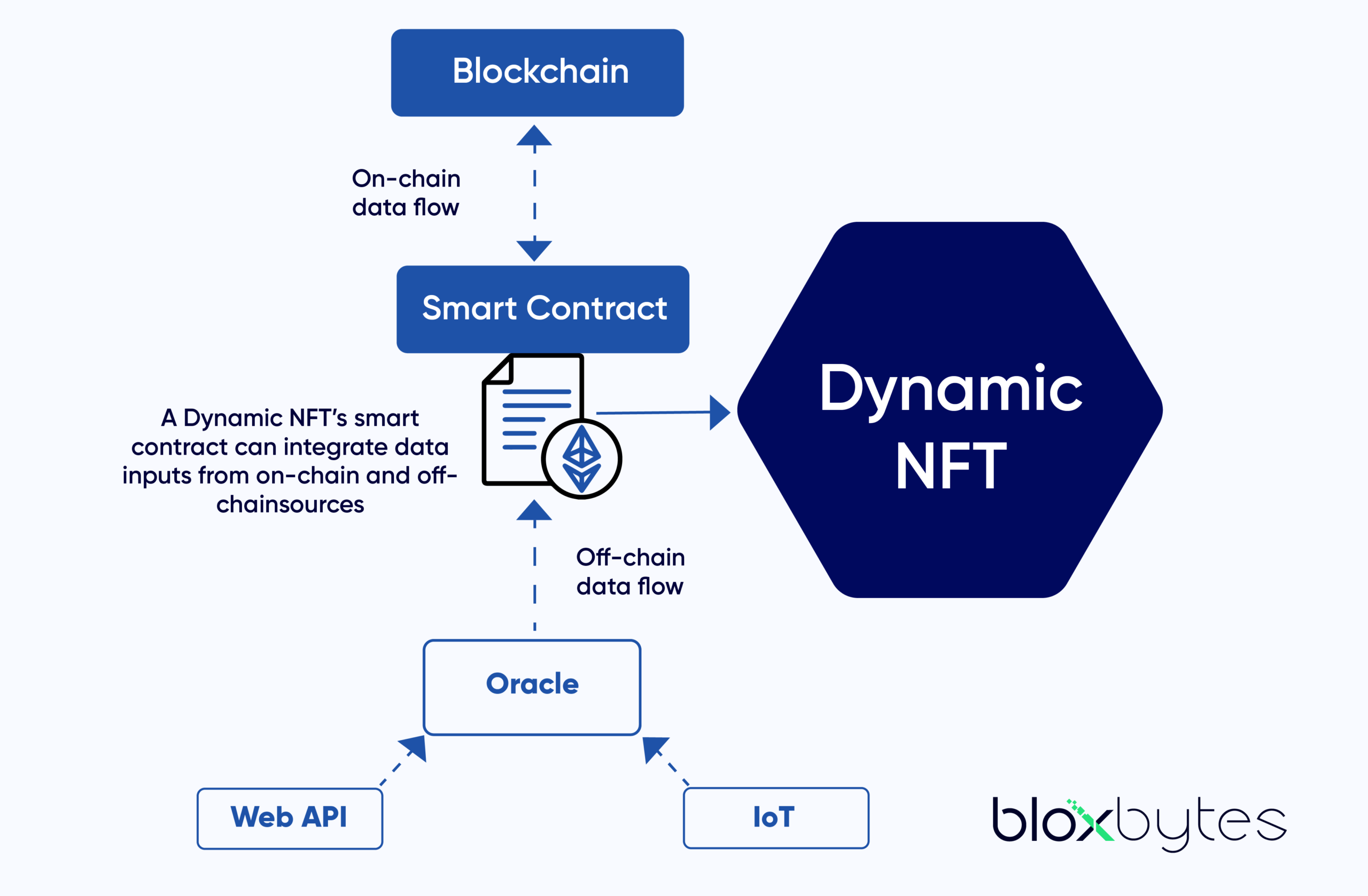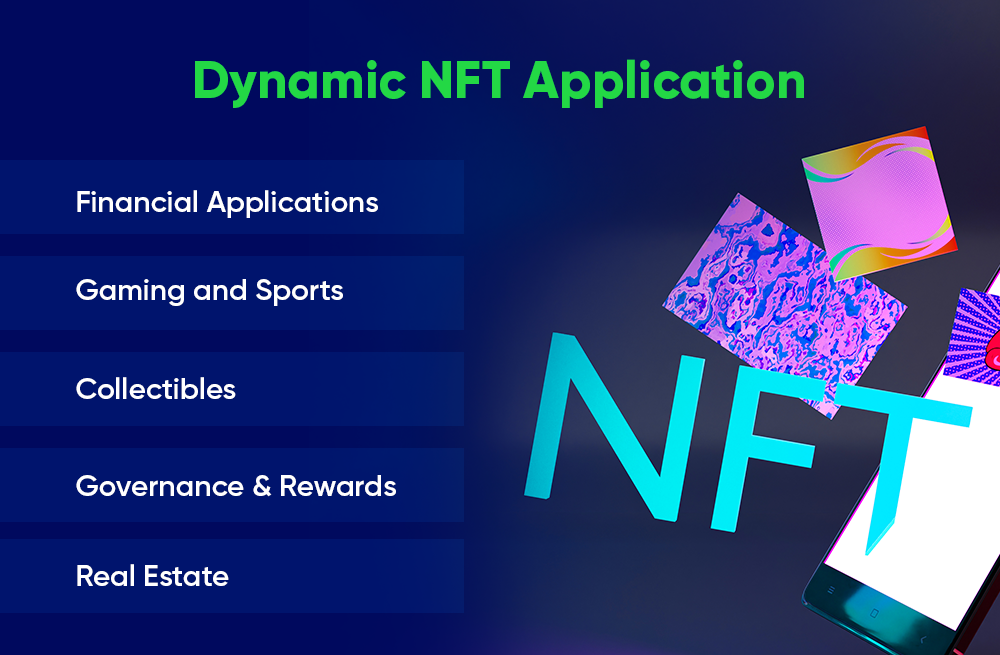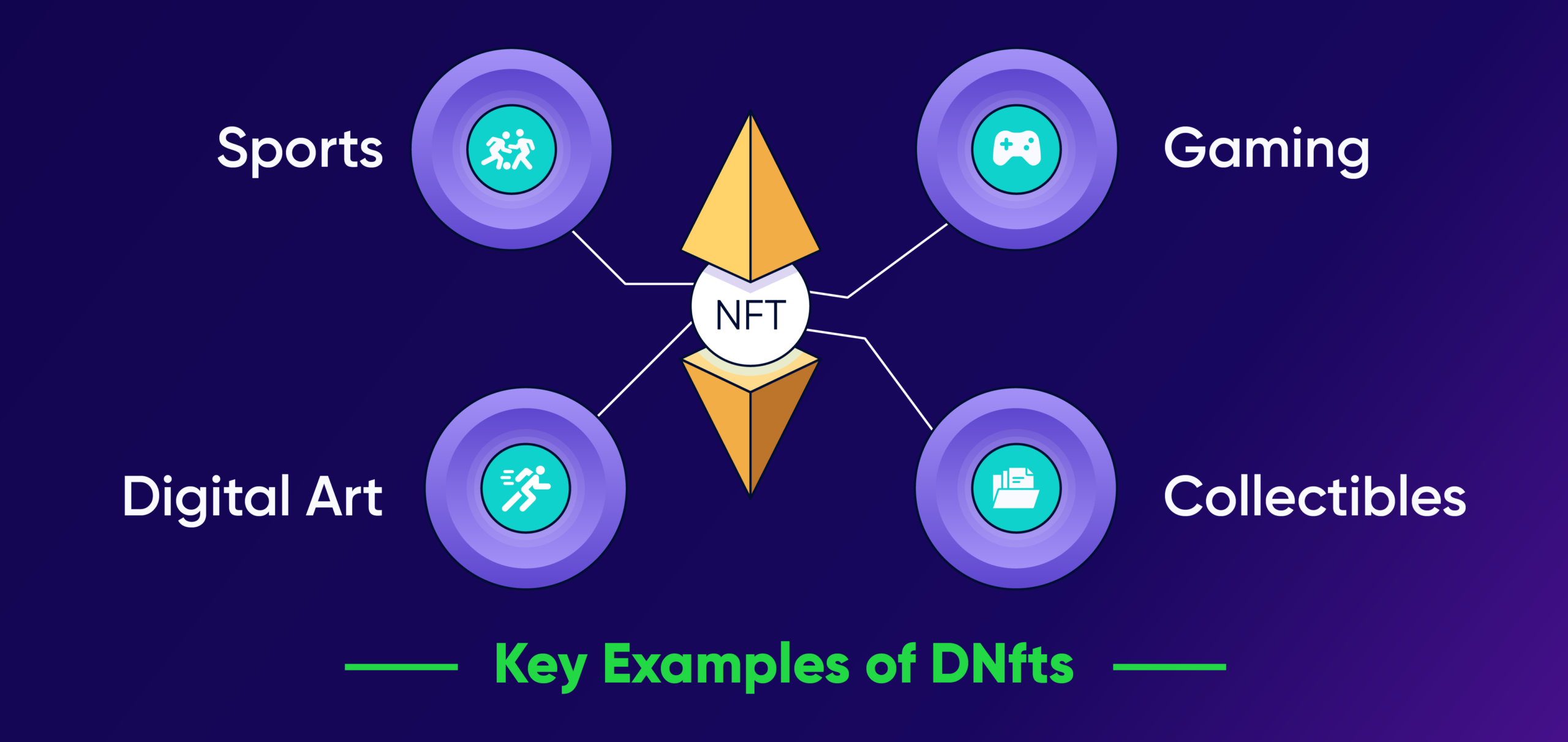
Introduction
Web3 & Blockchain Consultancy :
Dynamic NFTs: Key Use Cases and Examples
Non-fungible tokens (NFTs) are cryptographically generated tokens that are secured through the implementation of blockchain. NFT has types like static NFTs which is the most common one. They represent tokenized digital assets that are immutable and cannot be changed after they are minted on the blockchain. This immutability ensures authenticity and provenance for the digital asset. Static NFTs can be digital artwork or anything like tickets. NFTs lack interface with external data and systems but this limitation can be resolved by allowing NFTs to interact with the outside world. So, the next evolution in NFTs is moving from static to dynamic smart contracts. In this blog, we will cover what are Dynamic NFTs, their use cases, and their examples. Let’s start;What is a Dynamic NFT or dNFT?
Prominent features of Dynamic NFTs
Dynamic NFTs are an evolution of traditional NFTs, storing content that can be updated based on external triggers. They are automated, like Blockchain oracles or APIs, and encourage creativity as they don’t restrain content over time, allowing creators to create more amazing works. This feature is a key advantage of smart contracts. They also offer numerous benefits like;- A high degree of interactivity due to flexibility and change.
- Useful in digital art, games, social networking, and other services.
- Offers programmability, allowing developers to define NFT behavior.
- High level of automation, enabling new use cases across industries.
- Opens new revenue streams for artists and creators.
The Role of Oracle in Dynamic NFTs
Dynamic NFTs work by updating metadata and introducing dynamic features, often required in DNFT applications like augmented reality apps. These unique tokens offer endless programmability and uniqueness, making them more accessible. Oracles help dynamic NFTs obtain off-chain data for changes and upgrades, bridging the gap between smart contracts and external web services. They also provide computing services for upgrades and modifications, making dynamic NFTs more decentralized and automated. Oracles also ensure that dynamic NFTs are more connected to the real world, enhancing their decentralization and automation.How Do Dynamic Nfts Work?
Because of the strong foundation of dynamic NFTs that is led by blockchain technology, they create immutable records of ownership and authenticity. In addition, Dynamic NFTs are like static NFTs that rely on smart contracts to define their changes over time. These contracts automate functions like animation, appearance, and behavior, and define the buying, selling, trading, and distribution of royalties. Dynamic NFTs use the ERC-1155 token standard, making them semi-fungible. They also use oracles to create interactive representations of digital assets. Users need a smart contract wallet to interact with dynamic NFTs, which can be collected, traded, or used in decentralized applications.
Dynamic NFTs Use Cases
Dynamic NFTs (dNFTs) boast the digital landscape by introducing NFTs that can evolve based on external factors. This unlocks a trove of use cases across various industries, some of which are listed below:
1. Financial Applications
dNFTs can be used for dynamic value updates, tokenized property, land and commodity management, and financial cash flows. Oracles can represent assets with fluctuating values, such as property or financial instruments, and streamline land ownership and commodity trading. Additionally, dNFTs can represent real-world assets’ cash flows, facilitating the creation of decentralized money markets with efficient collateralization processes.
2. Gaming
Dynamic NFTs make a huge contribution to the development of play-to-earn (P2E) games. dNfts allows gamers to make an effort to upgrade and change their NFT in-game items and sell them to make profits. It also incorporates real-world integration, with NFTs representing real-world locations that can be found using augmented reality, blending the physical and digital worlds for a dynamic gaming experience.
3. Sports
NFTs are used to represent cards to display football players and their stats like the scored goals throughout the seasons. These cards are designed for users to track and complete the statistics about the players. Therefore, the NFTs used to represent them need to be “dynamic” – able to be altered.
4. Collectibles
dNFTs offer a unique collectible experience by allowing artwork to adapt to external stimuli, bridging the gap between physical and digital assets. They can also represent real-world connections, such as houses updating their value based on market fluctuations, and sports, with their value fluctuating based on performance.
5. Governance and Rewards
Companies can use dNFTs to reward consumer actions, such as completing specific tasks, earning lifestyle rewards, achieving milestones, and promoting brand loyalty. Limited edition dNFTs can be minted for events or achieving specific milestones, while limited-time dNFT coupons can be used to reward frequent customers. NFTs can also be used for crowdsourced voting within Decentralized Autonomous Organizations (DAOs), empowering communities to make decisions about token schedules and project direction.
6. Real Estate
Real estate tokenization is a complex process that involves updating records in real time to track property value. Dynamic NFTs can help in this by keeping immutable records of maintenance work, ownership information, and sales transactions. This allows players in the real estate industry to keep records accurate and up-to-date, ensuring transparency and efficiency in the real estate industry.
Key Examples of DNFTs
Below are some real-life and best dynamic NFT examples that are taking the world by storm!
- Sports: NBA player LaMelo Ball’s NFT collection, which reflects his performance and offers benefits to holders, underwent a visual transformation after winning the Rookie of the Year award. These NFTs track Ball’s stats, such as a triple-double, and change based on his achievements.
- Gaming: This blockchain-based trading card game uses in-game dynamic NFTs. The NFTs can be upgraded over time, giving players a competitive advantage.
- Digital Art: Beeple, a prominent figure in the early adoption of dynamic NFTs, created the popular artwork “Crossroads” featuring Donald Trump, which was designed to show either a triumphant or defeated Trump depending on the 2020 election results.
- Collectibles: A platform for the collection and creation of programmable digital art. This art can change and evolve based on various external conditions. Each art is represented by a dynamic NFT, making it unique and attractive to collectors.